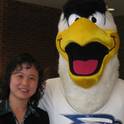- Education and
- Mathematics
Analytic simulation in computed tomography(CT) generates projection data for evaluating and improving CT image reconstruction algorithms and has played an important role in the research and development of x-ray CT. The simulation is desired to be as realistic as possible while the computation needs to be efficient and accurate. Early primitive equation-based phantoms such as Shepp-Logan and FORBILD use only boxes, cylinders, and quadrics to simulate body parts. The superquadrics have been used in Computer Graphics since 1980's, and in CT since 1990's. While their more complex shapes make them more realistic in simulation, the difficulties in solving their equations increase dramatically, which restricts their use, especially in ray-tracing and x-ray transform. Zhu et al. developed an algorithm for ray-intersecting the superellipsoid and used it to build a thorax phantom. No algorithms for ray-intersecting the supertoroid, however, are known up to now to the best of our knowledge. In this paper we propose such an algorithm and use it in computation of x-ray transform. The algorithm was tested by a phantom consisting of the top portion of vertebrae and a few ribs. Cone-beam data were produced from the phantom, and then used to reconstruct the phantom.
Available at: http://works.bepress.com/jiehua_zhu/3/
